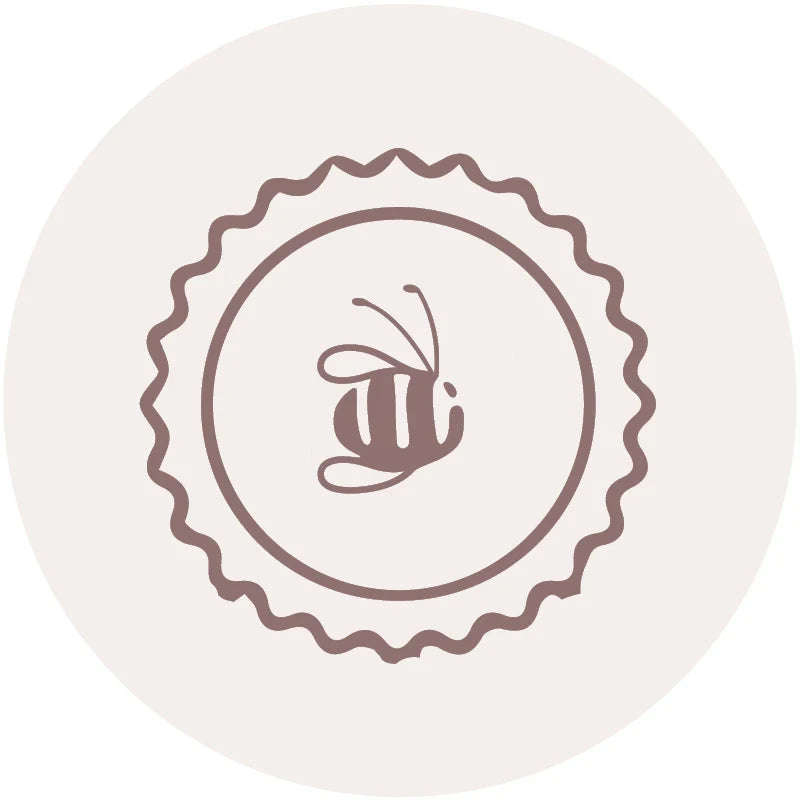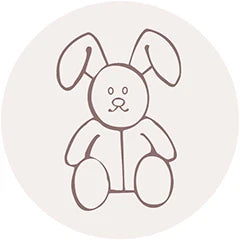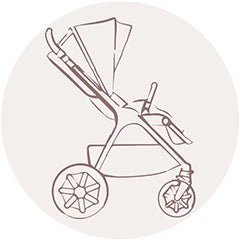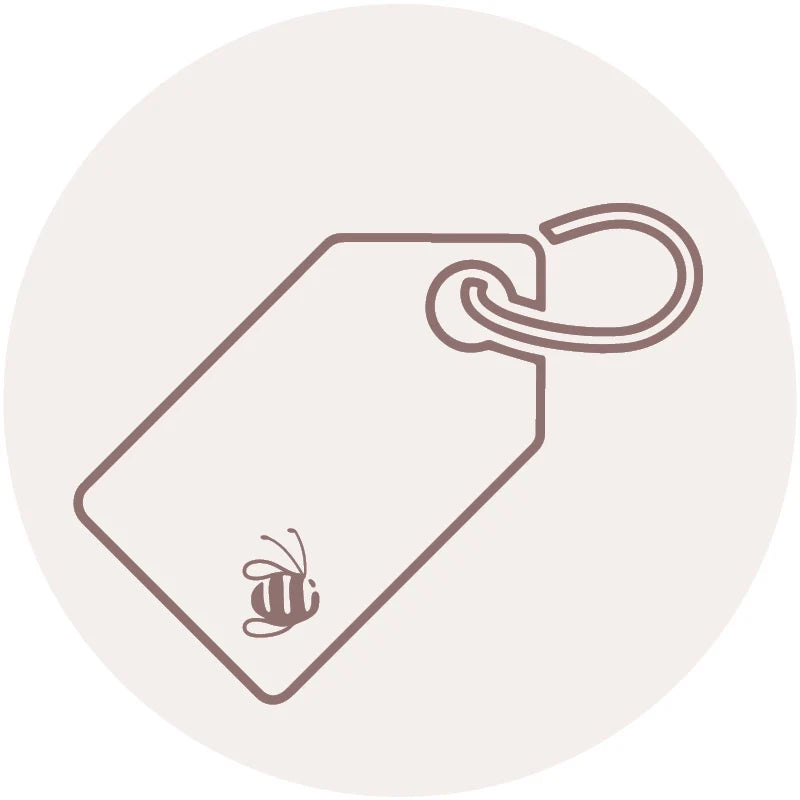ComfiCore Cot Mattress Standard 130x69
ComfiCore Cot Mattress Standard 130x69
SKU:ABM-CMCCB2
Clothing Prem to 18 Months
| Size | Age Guide | Weight | Height |
|---|---|---|---|
| Premature | Premature or Small Newborn | Up to 4Kg | Up to 55cm |
| Newborn | 0-3 months | 4-6Kg | Up to 62cm |
| 3 Month | 3-6 months | 6-8Kg | Up to 68cm |
| 6 Month | 6-12 Month | 8-10Kg | Up to 76cm |
| 12 Month | 12-18 Month | 10-12Kg | Up to 84cm |
| 18 Month | 18-24 Month | 12-14Kg | Up to 92cm |
Clothing 2 to 6 Years
| Size | Age Guide | Height | Chest | Waist | Hip |
|---|---|---|---|---|---|
| 2 Year | 2-3 Years | Up to 100 cm | 56 | 51 | 58 |
| 3 Year | 3-4 Years | Up to 105 cm | 58 | 53 | 60 |
| 4 Year | 4-5 Years | Up to 110 cm | 60 | 55 | 62 |
| 5 Year | 5-6 Years | Up to 115 cm | 62 | 57 | 64 |
| 6 Year | 6-7 Years | Up to 120 cm | 64 | 59 | 66 |
Beanie Size Guide
| Size | Head Circumference | Age Guide |
|---|---|---|
| Premature | 31-35 cm | Premature or Small Newborn |
| Newborn | 35-40 cm | Newborn |
| Small | 40-43 cm | 3-6 Months |
| Medium | 43-47 cm | 6-18 Months |
| Large | 47-52 cm | 18-3 Years |
Sunhat Size Guide
| Size | Head Circumference | Age Guide |
|---|---|---|
| Newborn | 37-40 cm | Newborn |
| Small | 40-43 cm | 3-6 Months |
| Medium | 43-46 cm | 6-12 Months |
| Large | 46-49 cm | 12-24 Months |
| Xtra Large | 49-54 cm | 2-4 Years |
Sleep Pods Size Guide
| Size | Weight | Age Guide | Measurement(Back to Hem) |
|---|---|---|---|
| Newborn | 0-6 kgs | 0-3 Months | 60.5 cm |
| Small | 0-8 kgs | 3-6 Months | 66 cm |
Booties Size Guide
| Size | Age Guide |
|---|---|
| Newborn | 0-3 Months |
| Small | 3-6 Months |
| Medium | 6-12 Months |
| Large | 12-18 Months |
Pretty Brave Baby
| Foot Length (mm) | Insole Length (mm) | EU | UK | Age | INT |
|---|---|---|---|---|---|
| 95-104 | 110 | 16/17 | 2 | 0-6m | S |
| 104-114 | 118 | 18 | 3 | 6-12m | M |
| 114-123 | 127 | 19/20 | 4.5 | 12-18m | L |
| 123-137 | 142 | 21/22 | 5.5 | 16-22m | XL |
Pretty Brave 1st Walker
| Foot Length (mm) | Insole Length (mm) | EU | UK | Age |
|---|---|---|---|---|
| 114-120 | 125-128 | 19 | 3 | 1 yr |
| 120-126 | 132-135 | 20 | 3.5 | 1-2 yrs |
| 126-132 | 138.5-141.5 | 21 | 4.5 | 1-2 yrs |
| 132-138 | 145-148.5 | 22 | 5 | 2 yrs |
Crywolf Swim Nappy
| Size | Length (waist to crotch) | Crotch Width (side to side) |
|---|---|---|
| 0-1 yr | 1-2 yrs | |
| 37 | 38 | |
| 14.5 | 15.5 |
Crywolf Rash Suit
| Size | Length (back neck to crotch) | Chest (arm to arm) | Waist (side to side) | Sleeve (neck to cuff) | Neck Opening(diameter) |
|---|---|---|---|---|---|
| 6-12 Months | 1 yr | 2 yrs | 3 yrs | ||
| 40 | 42 | 44 | 46 | ||
| 25 | 26 | 27 | 28 | ||
| 24 | 25 | 26 | 27 | ||
| 30 | 31.5 | 33 | 34.5 | ||
| 13.25 | 13.25 | 13.8 | 14.3 |
Low stock
Couldn't load pickup availability
Overview
Overview
With the Babyrest ComfiCore Cot mattress, baby can sleep soundly on a safe, comfortable and breathable surface. The solid foam core is engineered to provide the right amount of support & comfort for your little one - firm enough to be safe & supportive of your little ones' growing body, but also comfortable to sleep undisturbed. Ventilation channels run through the foam core for maximum airflow, providing temperature regulation, breathability and freshness - 3 important ingredients for safe and sound sleep. And if baby sleeps soundly, mum & dad can too. Now available in 'Mattress-in-a-Box' format for convenient handling and cost effective shipping!
What's Included
What's Included
Technical Specification
Technical Specification
User Guide
User Guide
Delivery and Returns
Delivery and Returns
- Delivery: Free within NZ on orders over $100 (excluding bulky items) or $8 standard shipping
- Returns: Accepted within 14 days of receipt with proof of purchase
- Some items are excluded from returns including sale items, hardware, car seats, prams, monitors and personal items - please click here for the full list.
Share this product
Recently Viewed Products
Related Blogs
Introducing a bedtime routine with your baby
The Power of a Bedtime Routine for Your BabySimple rhythms that lead to better sleep - for both of you In the early weeks with a newborn, life tends to move to a rhythm all on its own. Feeds, naps, cuddles, and nappy changes often blur into one another, and any sense of routine can feel a little out of reach. That’s completely normal! As your baby grows, you’ll notice more predictable patterns beginning to emerge. This is the perfect time to gently introduce a bedtime routine – a simple series of calming steps that helps your baby unwind and gives you both a peaceful finish to the day. Why bedtime routines matter Babies thrive on repetition. A consistent series of calming activities each evening helps regulate their body clock, encourages longer stretches of sleep, and creates a comforting rhythm to the day. Routines don’t just benefit sleep - they also nurture connection, ease overstimulation, and make bedtime feel less like a battle and more like a shared moment of calm. These rituals will evolve as your baby grows, but the sense of structure and predictability will continue to support their development well into childhood. When to begin You can begin easing into a bedtime routine from around six to eight weeks old - once your baby begins to show more consistent sleep and feeding patterns. This is also when they start to recognise daily cues, making it the perfect time to introduce a gentle ritual that helps them wind down. How to get started There’s no “perfect” routine - what works for one family might not suit another. The key is consistency, calmness, and keeping things relatively short (20 to 30 minutes is ideal). Try to carry out most of the routine in your baby’s room so they start to associate the space with sleep. Here’s a sample rhythm to get you started: Bath - A warm bath helps wash away the day and begins the wind-down process. This can also be a fun and playful moment, especially if older siblings are involved. Massage - After bath time, a quick massage with something like Scullys Baby Massage Oil can help your baby get ready for rest. This is a wonderful way to connect with your baby through touch, as well as being very relaxing for both of you. Sleepwear - Soft, breathable pyjamas or a sleeping gown signal that bedtime is near. You might like to use Merino to help regulate temperature throughout the night. We have a gorgeous range of safe and cosy sleepwear available here. Feeding - Try offering the final feed early in the routine rather than just before sleep. This can help reduce reliance on feeding to fall asleep. Story or song - A simple board book, soft lullaby, or even humming a tune gives your baby a consistent cue that bedtime is here. It also builds language skills and creates special bonding moments. Cuddles - A warm snuggle and quiet kiss goodnight helps your baby feel safe, even if you’ll likely see them again overnight. Watch for sleepy cues Rather than watching the clock, keep an eye on your baby. Rubbing eyes, zoning out, yawning, or fussing can all signal tiredness. Aim to start the bedtime routine before they become overtired. For most babies, somewhere between 6:30 and 7:30 pm works well, and this timing can continue into the early school years. Keep the environment sleep-friendly A dark, quiet space tells your baby’s brain that it’s time to sleep. Avoid bright lights, noisy toys, or too much stimulation. Night lights can be helpful for feeding and changes, but aren’t necessary for sleep - babies aren’t born afraid of the dark. You could add a soft and practical sleep sound machine, like a Yogasleep Nod to make night-time care easier with it's built in night light. Put baby to bed drowsy, not asleep As you get to know your baby’s cues, try placing them into bed when they’re sleepy but still awake. This helps them learn to settle themselves, which can make overnight waking easier to manage. It also reduces the shock of waking up in a different spot from where they fell asleep. Be consistent - but stay flexible Consistency is key, but so is flexibility. There’ll be times when travel, illness, or overtired evenings throw things off. The idea is to have a calming, repeatable routine you can come back to, wherever you are. If more than one caregiver can do bedtime, that helps too - it builds flexibility and avoids babies becoming dependent on one specific parent for settling. Small rituals with lasting benefits Your baby’s routine doesn’t need to be perfect, and it will change over time. But these small, daily rhythms bring more than just sleep - they offer connection, confidence, and a peaceful way to end the day together. One day, your baby will be reading their own book at bedtime. But your cuddle and goodnight kiss? That will still matter, even if you have to sneak it in after lights out ❤️
Learn moreTemperature Control and Sleep
Hot and cold – helping your baby sleep comfortably We all know how much temperature affects sleep. Too hot and you’re tossing the covers off, too cold and you’re hunting for another blanket. For babies, who are still learning to regulate both their body temperature and sleep patterns, the impact can be even greater. If they’re too warm or chilly, they might struggle to drift off – or wake more often through the night. The good news is you can help keep your baby at a comfortable temperature with the right mix of clothing, bedding, and room adjustments, making it easier for them to settle and stay asleep. Why temperature matters Our bodies can regulate internal temperature, but during deep sleep, that process slows down. This means a room that’s too hot or too cold can cause night wakings. For babies, the ideal room temperature is around 18°C – it might sound cool, but a lower core temperature is linked to better sleep, while warmer conditions often mean more restlessness. A warm bath before bed can also help. While it seems backwards, the water on your baby’s skin will cool them down after the bath, helping them start the night at a comfortable temperature. Ways to manage temperature Heaters, fans, air conditioning, and the right bedding can all help keep things steady through the night. If you have a thermostat, set it to 18°C and let it do the work. If not, you can buy a plug-in thermostat for your heater to help maintain consistency. Merino – your sleep-time secret When it comes to baby sleepwear, merino wool is a year-round winner. Naturally breathable and temperature-regulating, it helps keep your baby comfortable in both warm and cool conditions – and research shows it can even help them sleep longer. In winter, use merino layers under a merino sleeping bag or sleepwalker. In summer, lighter cotton or merino sleepwear with a lighter weight sleeping bag is usually enough, depending on the temperature where you are. Sleeping bags are especially useful as they can’t be kicked off like blankets, keeping your baby covered all night. Choose one with a weight (or TOG rating) that suits the season. Spotting temperature troubles Signs your baby might be too hot: Waking often Sweaty neck or back Damp hair Rapid, shallow breathing If you notice these, remove a layer of clothing, switch to a lighter sleeping bag, improve airflow, or lower the room temperature. If your baby seems uncomfortably hot, check for fever and use a cool, damp cloth on their forehead and back. Signs your baby might be too cold: Moving around the cot more than usual Rolling onto their stomach during sleep Frequent short naps Early morning waking (around 5am, when body temperature naturally dips) If this happens, add a layer, switch to a warmer sleeping bag, or adjust the room temperature. Getting the temperature right won’t solve every sleep challenge, but it’s one piece of the puzzle that can make nights smoother for everyone. Click here to shop our full range of merino.
Learn moreCrying for a Reason: Decoding Your Baby’s Different Cries
Every baby cries, but not every cry means the same thing. We’ve enlisted Family Sleep & Wellness Coach, Lauren Moran from Little Dreamers, to help decode the different cries.
Learn moreHow to Dress your baby for Sleep
Dressing Your Baby for Sleep – A Seasonal Guide Knowing how to dress your baby at bedtime can feel like a bit of a guessing game – especially when the seasons start to change. Should you add another layer? Is the room too cool? Are their hands meant to be that cold? To help take the guesswork out, we’ve put together a simple guide to dressing your little one for sleep using our Dimples sleeping bags and sleepwalkers, without any additional blankets. A Gentle Reminder Every baby is different, so this guide is just that – a guide. The best way to check if your baby is at a comfortable temperature is by feeling the back of their neck. It should feel warm, not hot or sweaty. Hands and feet can feel cooler and aren't always a reliable indicator. Baby’s body temperature naturally dips during the early morning hours, so if your little one is waking more often than usual, it might be worth checking if they’re feeling a bit chilly. And remember – when it comes to sleep, it’s safer for babies to be slightly cool rather than too warm. Choosing the Right Layers When dressing your baby, natural fibres like Merino wool or cotton are best. These breathable fabrics help regulate temperature and keep your baby comfortable through the night. Merino in particular is a year-round superstar – its clever fibres trap warm air on cooler nights and allow heat to escape on warmer ones, making it ideal for all seasons. At Dimples, all of our garments are designed especially for keeping little ones cosy and safe. We recommend having at least two sleeping bags or sleepwalkers on hand for each season, so you’re always prepared for the inevitable midnight messes. Ideal Room Temperature The ideal temperature for a baby’s room is between 16–20°C. If you’re using a heater or heat pump, setting the thermostat to 18°C will help maintain a steady climate through the night without overheating. Monitoring the Room Many baby monitors display room temperature, which can be a helpful reference.Alternatively, something like the Shnuggle Moon Nightlight can be used to keep an eye on the room temperature. It uses a handy colour display to show whether the room is sitting within the ideal range. Signs Your Baby May Be Too Warm Waking more frequently than usual Sweaty back or neck Damp hair Shallow or rapid breathing If you notice these signs, try removing a layer or adjusting the room temperature. A cool, damp cloth on the back of their neck can help if they’re feeling very warm – and always check for fever if you’re concerned. Signs Your Baby May Be Too Cold Restless sleep or unusual movement around the cot Rolling onto their stomach Catnapping during the day Waking around 5am If any of these sound familiar, consider adding a layer, using a warmer sleeping bag, or gently warming the room. Dressing your baby for sleep doesn’t have to be stressful. With a few key pieces and a little trial and error, you’ll find the sweet spot that keeps them cosy and safe – all night long 😴 Explore our full sleepwear range to find breathable, natural fibre options for every season.And if you’re ever unsure, we’re here to help.
Learn more




















